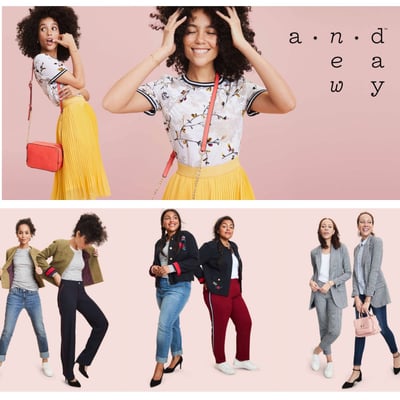In many regions, Target is a favorite mass retailer likely because, in many ways, shopping there doesn't tend to feel like the typical 'big box store' experience. A Target Run is an event to look forward to, and many consumers would agree that between its visual marketing, curated collections, and that dollar section that just pulls you right in, Target somehow turns even a quick shopping trip into an adventure. However, only a few years ago, Target revamped much of its branding and merchandise to enhance this experience further, mainly by launching a new set of in-house brands of clothing, home ware, and more. In this post, we'll discuss how Target launched these in-house brand and why exclusivity can be an effective marketing technique.
Target's In-House Brand Launch Campaigns
In 2017, Target introduced a dozen private brands across different segments of the store, including A New Day, Goodfellow & Co., Project 62, and Joy Lab, simultaneously phasing out several outside brands it previously carried, such as Merona and Mossimo. But why the change? According to chief marketing officer Rick Gomez, the main purpose of the revamp was differentiation in the marketplace. While Target remained near the top of its market, the brand was competing more than ever with online retailers for consumer spend and awareness.
 By launching in-house brands that you can only get in the stores and on the company's website, Target is able to provide a unique, exclusive shopping experience with products that can't be purchased anywhere else, including Amazon and other big box competitors like WalMart. In a way, we can view Target's strategy sort of like experience marketing, offering consumers a private experience that they can only get at Target. This differentiation through innovation is a cornerstone of Target's marketing strategy, and yet another way the company sets itself apart from its competitors. By offering exclusive brands, the special feeling that comes with a trip to Target is that much more enhanced.
By launching in-house brands that you can only get in the stores and on the company's website, Target is able to provide a unique, exclusive shopping experience with products that can't be purchased anywhere else, including Amazon and other big box competitors like WalMart. In a way, we can view Target's strategy sort of like experience marketing, offering consumers a private experience that they can only get at Target. This differentiation through innovation is a cornerstone of Target's marketing strategy, and yet another way the company sets itself apart from its competitors. By offering exclusive brands, the special feeling that comes with a trip to Target is that much more enhanced.
However, the launch wouldn't have made much of a splash at all if Target didn't let consumers know about it. The brand put heavy ad push behind the launch of the in-house lines through print, TV, and digital with the new products at the forefront. If the idea is to get more consumers shopping in the store, Target knew that they would need to devote a lot of advertising to building the hype and bringing people in. The campaign, which showcased the modern sensibilities behind the new product lines, featured the tagline "More in Store," encouraging consumers to shop at Target instead of online retailers like Amazon or Ebay.
Within the campaign, Target used a fresh creative direction that focused on clean, modern photography that lets the products speak for themselves as well as innovative approaches to content and visuals. While each private brand has its own look and feel, differentiating the collections for a curated feel, the overall More in Store campaign focuses on sleek but fun photography with a modern, minimalist aesthetic with its white backgrounds. Upbeat music communicates the fun experience Target is promoting with its new brands, and the brand has also made efforts to showcase more diverse models in its advertising.
By promoting both exclusive, innovative products and the experience of shopping in-store, Target was able to successfully launch its new private brands with a lot of buzz and excitement.


